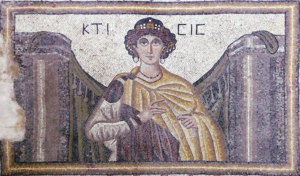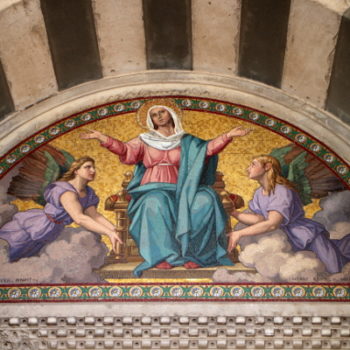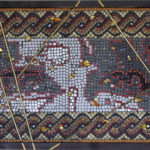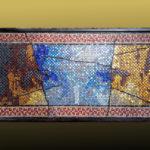Ktisis – the process of becoming in 5th and 6th century Byzantine mosaics.
The personification of Ktisis often appears in different contexts, religious as well as profane, in floor mosaics of the 5th and 6th centuries in Eastern and African cities of the Byzantine empire.

In ancient Greek, KTISIS (κτίσις) is the process of becoming and coming into being, resulting from a deliberate decision. It is the act of causing to exist that which did not exist before. Ktisis may apply to :
• Foundation of a city.
• Construction of a new home, building or structure.
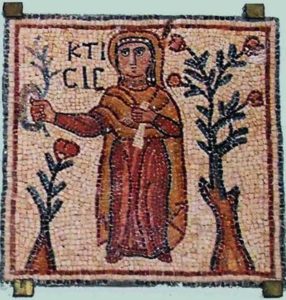
Ktisis appears often alone as well as together with the personifications of Κοσμησις (Kosmesis, ‘Embellishment’) and Ανανεωσις (Ananeosis, ‘Renewal’, ‘Restoration’).
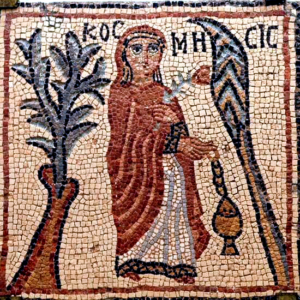

One of Ktisis attribute is a measuring stick or rod. Such tool would be used by the architects or workers designing or actually constructing the house or building actually founded.
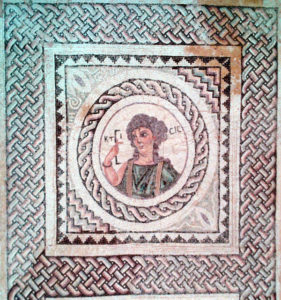
This rod, measuring tool for the Roman foot, identifies her as a personification of the abstract concept of “Ktisis,” or Foundation, and she symbolizes the donation, or foundation, of a building.
Personification of abstract ideas
We do not have representations of Ktisis anterior to the 5th century when most of the Empire was already Christian. This means Ktisis is not a Greek Goddess but a personification of the act of foundation.
Personification of abstract ideas, as developed by the Stoic philosophers, remained popular in the Early Christian era. Images of Ktisis inscribed with her name, survive on the floor mosaics of bathhouses as well as churches throughout the Byzantine Empire, from Antioch and Cyprus to such African sites as Qasr-el-Lebia and Ras-el-Hilal.
I researched and wrote an article showcasing several early byzantine mosaics representing KTISIS, at times also spelled KTICIC or KTHCIC. You can read or download it by clicking the link below :
Personifications of Ktisis in early Byzantine mosaics
